Metallic Oil Colors: Copper, Rich Gold, Pale Gold, and Silver
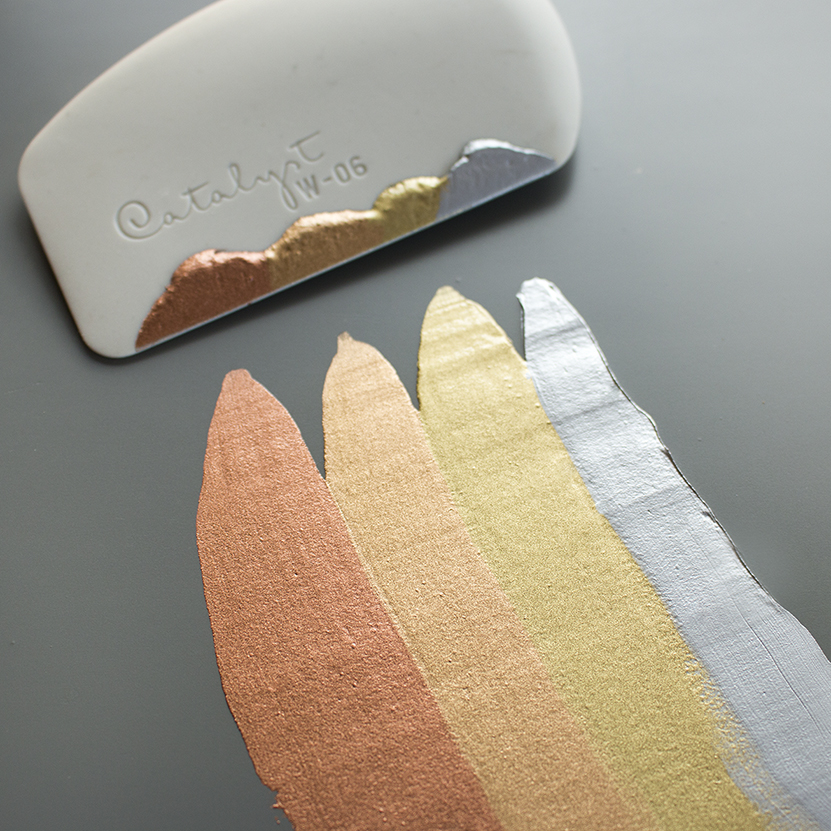
Gamblin Metals
Incorporating gold has a rich history in painting. From illuminated manuscripts to the “Golden Phase” of Gustav Klimt’s paintings, artists have explored the richness of gold to enhance their color palettes.
Contemporary painters continue this tradition by using tubed metallic colors for unique effects in their work.
Gamblin Copper, Rich Gold, Pale Gold, and Silver are made by suspending bronze and aluminum powders in an alkyd binder. It’s the light reflecting from all those bits of metal that create the “metal finish.” The real metal flakes scatter light in many different directions giving surfaces painted with Metals a soft, lustrous appearance.
What are Gamblin Metals like in mixtures?
Gamblin Metals have distinctive mixing characteristics. When mixed with transparent colors, they maintain their metallic luster and give glaze layers a unique sparkling quality.
Mixtures with transparent colors:
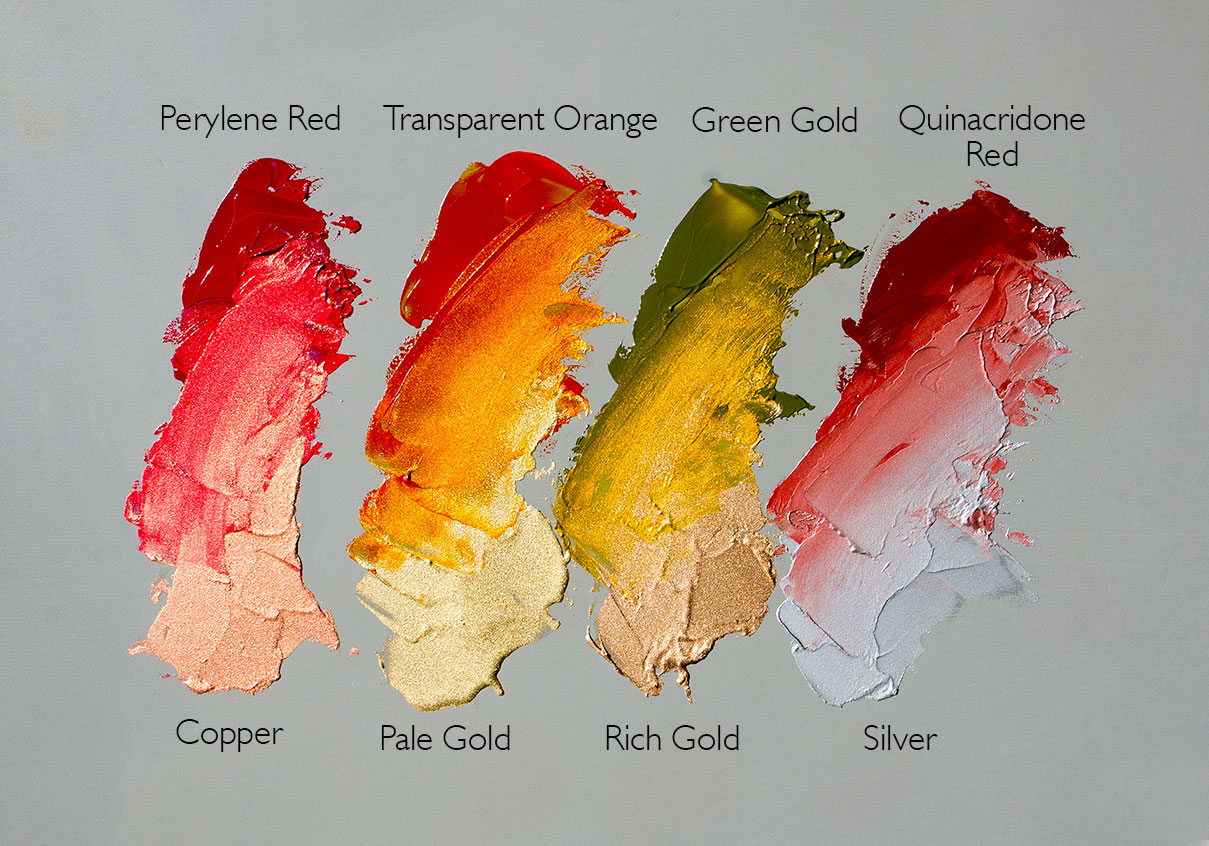
When mixed with opaque colors, however, their metallic quality disappears and greys-out quickly. Painters can take advantage of this to create luminous greyscales using Silver and white (illustrated in Kit King’s paintings below).
Mixtures with Titanium White:
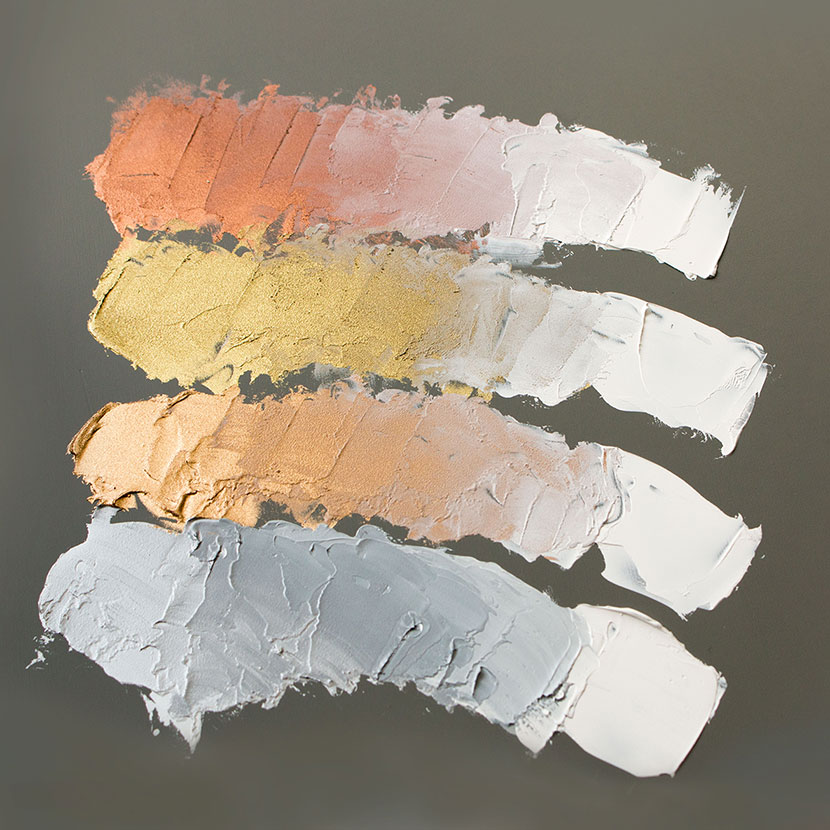
Techniques for painting with Metallic Colors
Kit King
How do you capture the glistening of water? You could paint a reflection, but it still won’t reflect the sun like water. It won’t catch your eye, or dance with you like water.

Kit King, Cold and Clear, oil on linen
The real metal pigment in the Silver emulates the reflective nature of water. When light hits the painting, the little beads of water glimmer and the painting comes to life- suddenly there is movement and breath.
I opted not to use white for the highlights, but rather thick strokes of Silver, which protrudes further than the rest of the flat surface, so that the raised areas catch the light and reflect a vibrant, specular highlight that gives the illusion of an ultra-bright white. Given the reflective nature of the Silver, the painting shifts in value as you walk by it – unlike traditional grey which remains fixed – the painting moves with lights and darks according to your position to it and the light in the room, and a little dance happens between the subject of the painting and the viewer.
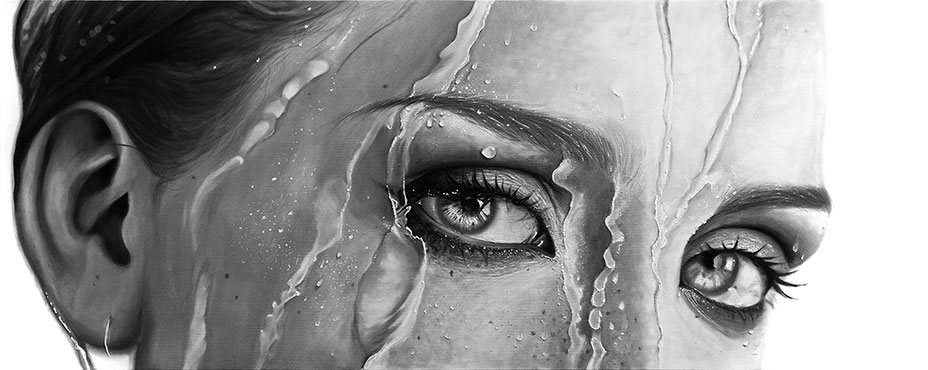
Kit King, Mirage, oil on linen
This movement is an important key to my work. I’m always looking for new ways to step away from traditional fixed and stagnant portrait painting to give breath to my art, and push the boundaries of oil painting as a medium. The metal pigment series of oil paints by Gamblin is just one way I chose to explore this.Kit King
Artist
Kristina Carroll
In these recent paintings, I’ve been incorporating Gamblin Rich Gold to augment real gold leaf to enhance my figurative paintings. It is a wonderful partner with real gold leaf to help add softness to edges and control shapes. This gives the areas of gold in my paintings a sense of atmosphere that I can’t get through gold leaf alone. As they are bound in alkyd, they dry quickly, which is very convenient.
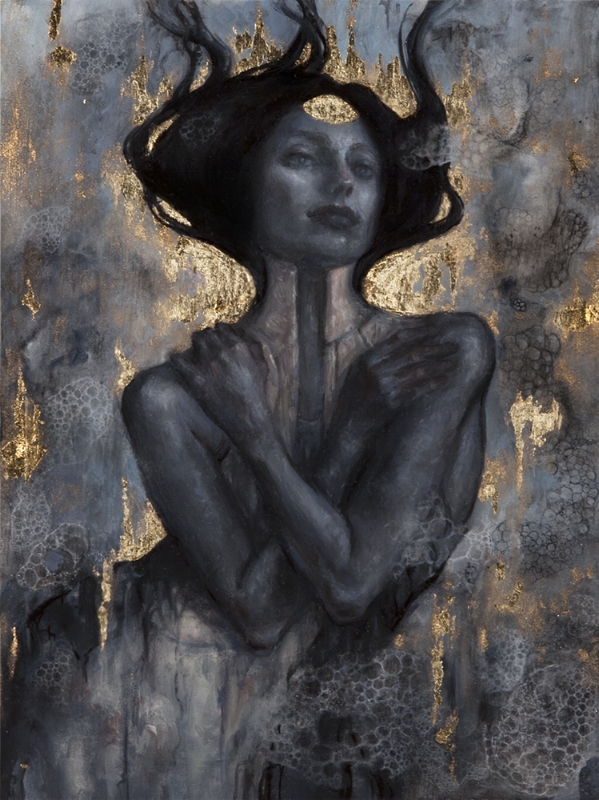
Kristina Carroll, Jin, oil and gold leaf on panelKristina Carroll
Artist
Mary Weisenburger
These compositions begin with a vivid, geometric underpainting using Gamblin Radiant Colors. The next step is to add Silver oil color as a glaze layer, concealing the intensity of the vivid underpainting while small moments of color show from beneath.
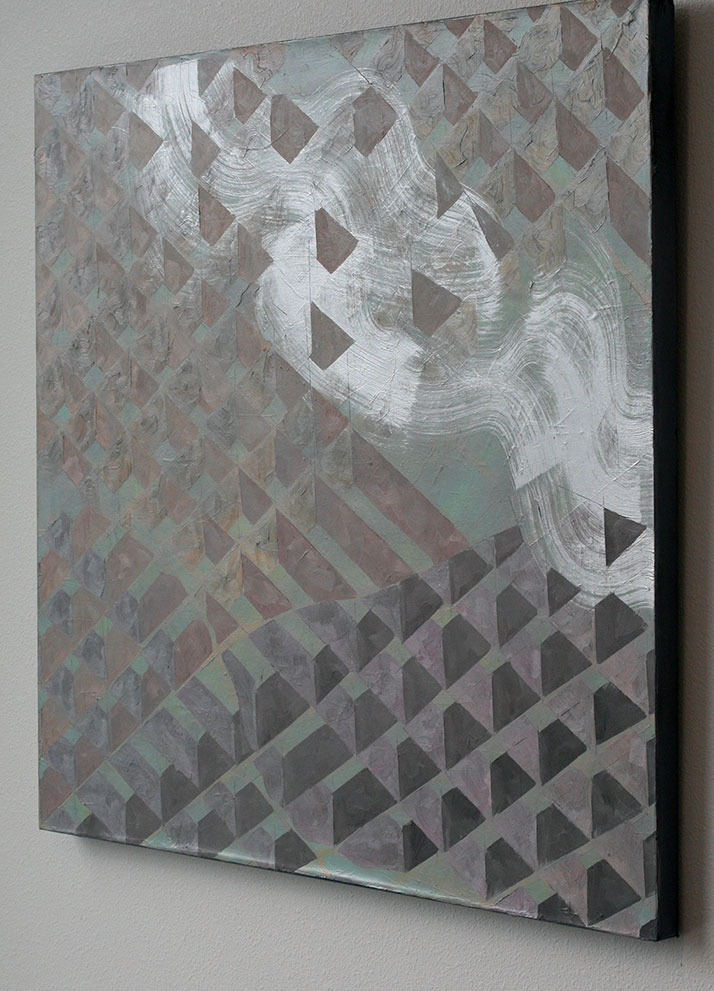
Mary Weisenburger, Untitled, oil on canvas
To give Silver more transparency I use Neo Megilp which retains my brush marks and adds texture. Lastly, I often mix in a transparent modern organic color to tint Silver and alter its color. Quinacridone Violet is a favorite for this, transforming Silver into a metallic mauve shade.
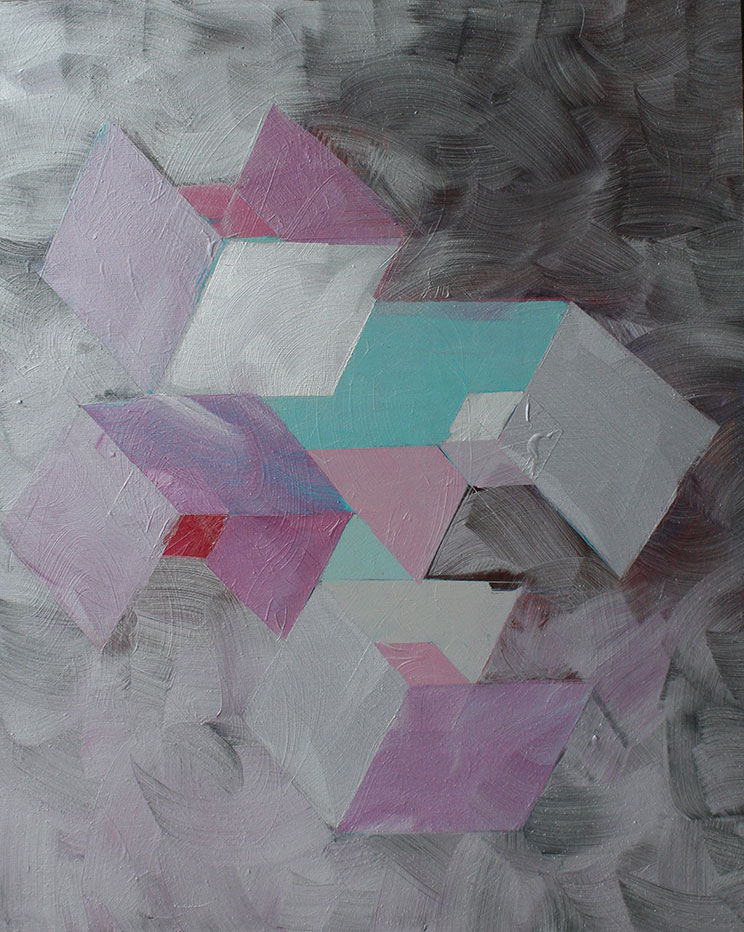
Mary Weisenburger, Untitled, oil on panel
I use the Quinacridone sparingly, so as not to overpower the reflective quality of the Silver pigment. The unique optical and surface qualities of the metallic colors give the work an interactive presence, as they visually change depending on the viewing angle of the paintings.Mary Weisenburger
Artist
Pierre Coupey
In Winter Poem II (NN), I’m exploring a restricted palette of Ashphaltum, Copper, Payne’s Grey, Warm White, Chromatic Black, Black Spinel, Ultramarine Blue, and Dioxazine Purple. It is important for me to match the palette to the content of my work.
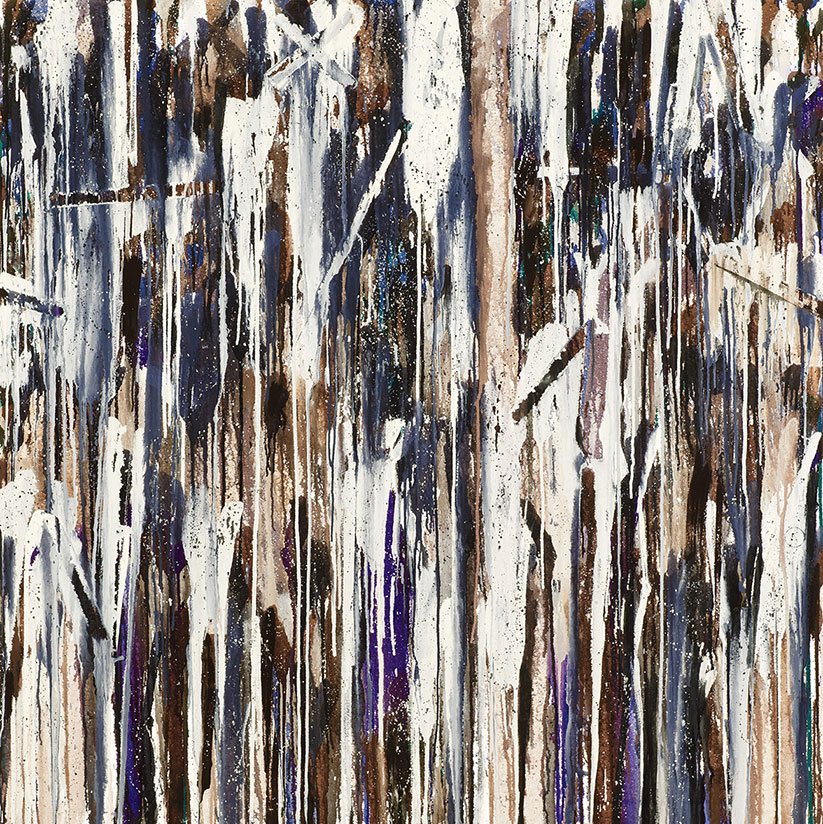
Pierre Coupey, Winter Poem II (NN), oil on linen
I begin with Gamblin FastMatte for the underpainting, alongside the Asphaltum and Copper. What interests me, in painterly terms, is the way very thin layers of the Copper interact visually with other pigments. For example, a veil of Copper over Ultramarine Blue and Dioxazine Purple makes for a dark shimmer. I’m not interested in “special” effects, but I’m finding a number of strange and new color resonances, nuances that embody the shivers, tones, and vulnerabilities of extreme human experiences.Pierre Coupey
Artist
Metallic Gallery

Juan Enrique Velazquez, Tricks, oil on canvas
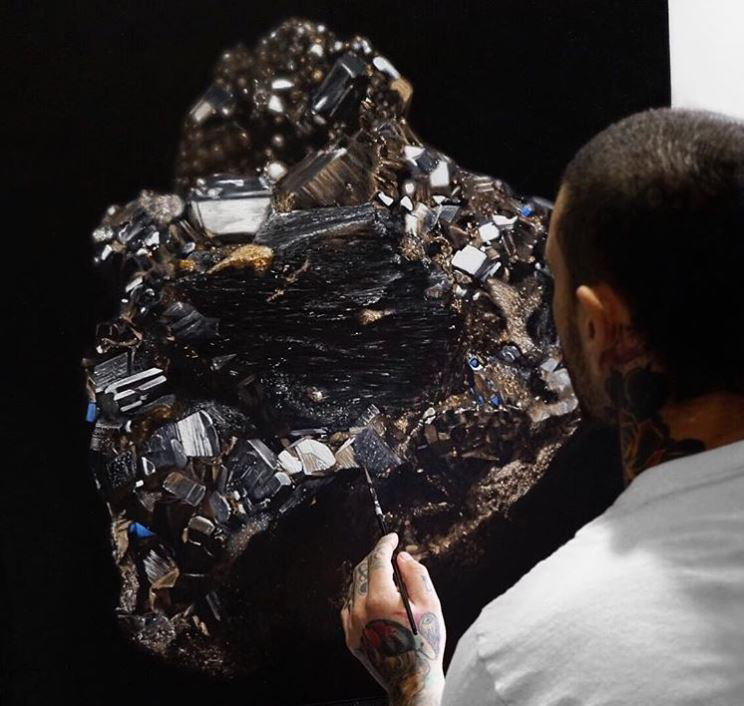
Oda Popp, Of Fire, oil on linen wrapped gallery panel

Lisa Laughy, Icon of the Great Bear, oil on wood carving
